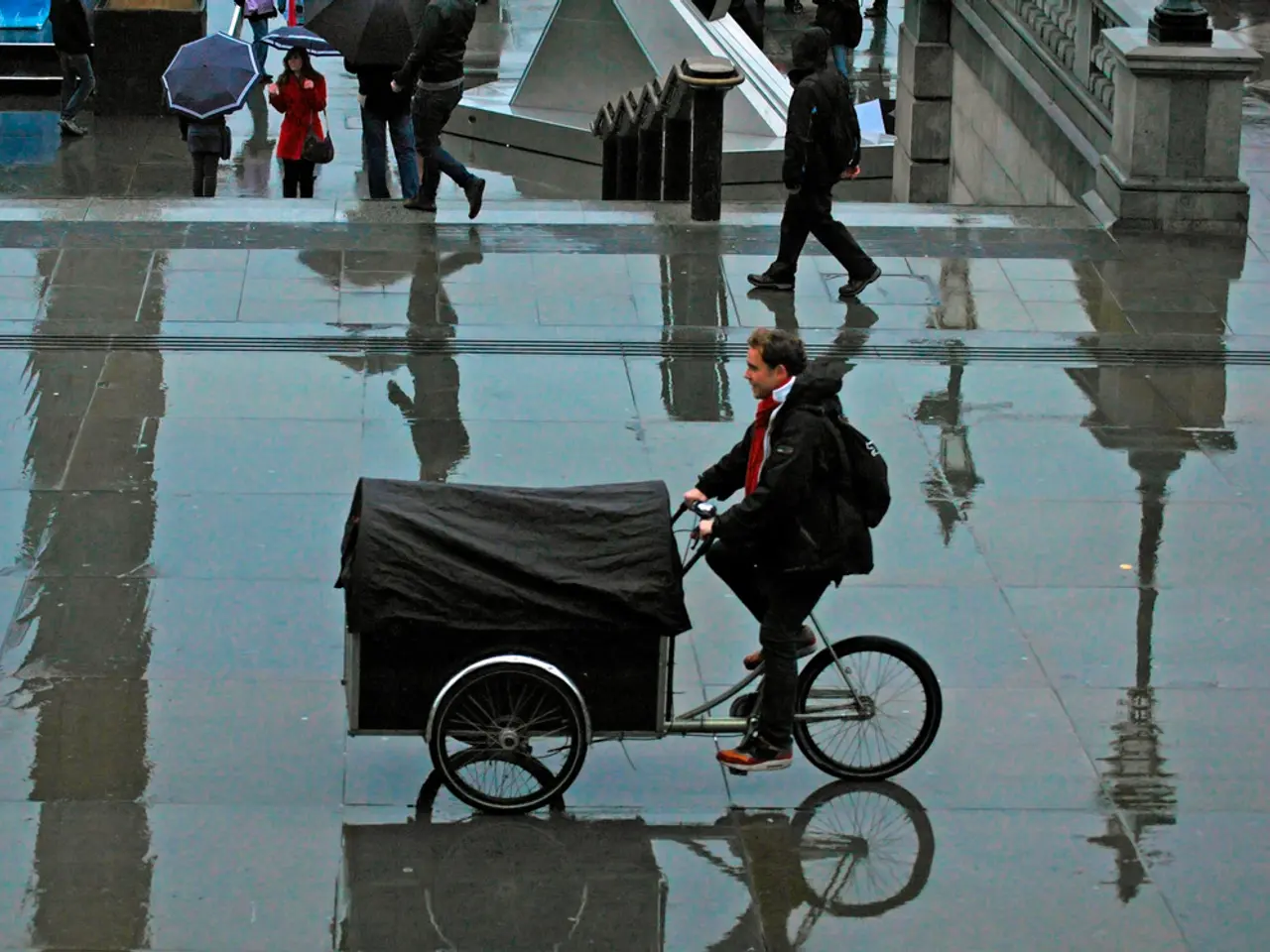Guide for Eco-Minded Tourists: Exploring Sustainable Transportation Choices
In the pursuit of a greener planet, every step counts - even when it comes to travel. For the eco-conscious explorer, the journey is just as important as the destination. Here's how one author approaches sustainable transportation for their travels:
Before hitting the road, the author meticulously maps out their route, checking charger types, power, hours, payment methods, and the local energy mix of electric vehicles (EVs). They also ensure that the chosen EV rental has a good charging reliability and a reasonable charging plan.
When driving isn't necessary, the author opts for more sustainable commuting methods. This includes walking, using public transit, biking, or even renting e-scooters for short trips. To offset any remaining emissions, they invest in verified carbon offsets.
Trains are a preferred choice for sustainable tourism. Not only do they offer lower emissions compared to cars or planes, but they also provide a unique travel experience. The author plans their trips to prioritise trains and public transit, choosing direct routes and comfortable, cost-effective options.
To make the most of their travel choices, the author keeps a range buffer of 20-30% battery in their EV and saves charger apps and a backup route. They also pack light to move faster and reduce energy use.
For city exploration, the author turns to public transit. They use a guide to find buses, trams, and metro lines, focusing on routes that drop them close to their accommodation to avoid taxis. The Berlin public transport company BVG offers cost-effective ticket options like the "Berlin ABC" ticket, which allows unlimited travel within specified tariff zones.
When bike-sharing or e-scooters are the best option, the author ensures they're equipped for safety. This includes bringing a helmet, lock, lights, and a phone mount. They also follow rules for scooter and bike parking, noting fines for violations.
The author's commitment to sustainability extends to their carbon offset projects. They prefer those listed on Gold Standard or Verra, choosing projects that support local communities and measurable outcomes.
Lastly, the author keeps records of their travel choices and emissions to track their impact and make informed decisions for future travels. They also follow safety rules when using bike-sharing, cycling, walking, and micro-mobility, scanning for hazards, testing brakes, and locking vehicles in designated spots.
By choosing these sustainable transportation options, eco-conscious travelers can reduce their personal carbon footprints, lower local pollution, and often improve their travel experience.
Read also:
- Peptide YY (PYY): Exploring its Role in Appetite Suppression, Intestinal Health, and Cognitive Links
- Toddler Health: Rotavirus Signs, Origins, and Potential Complications
- Digestive issues and heart discomfort: Root causes and associated health conditions
- House Infernos: Deadly Hazards Surpassing the Flames








